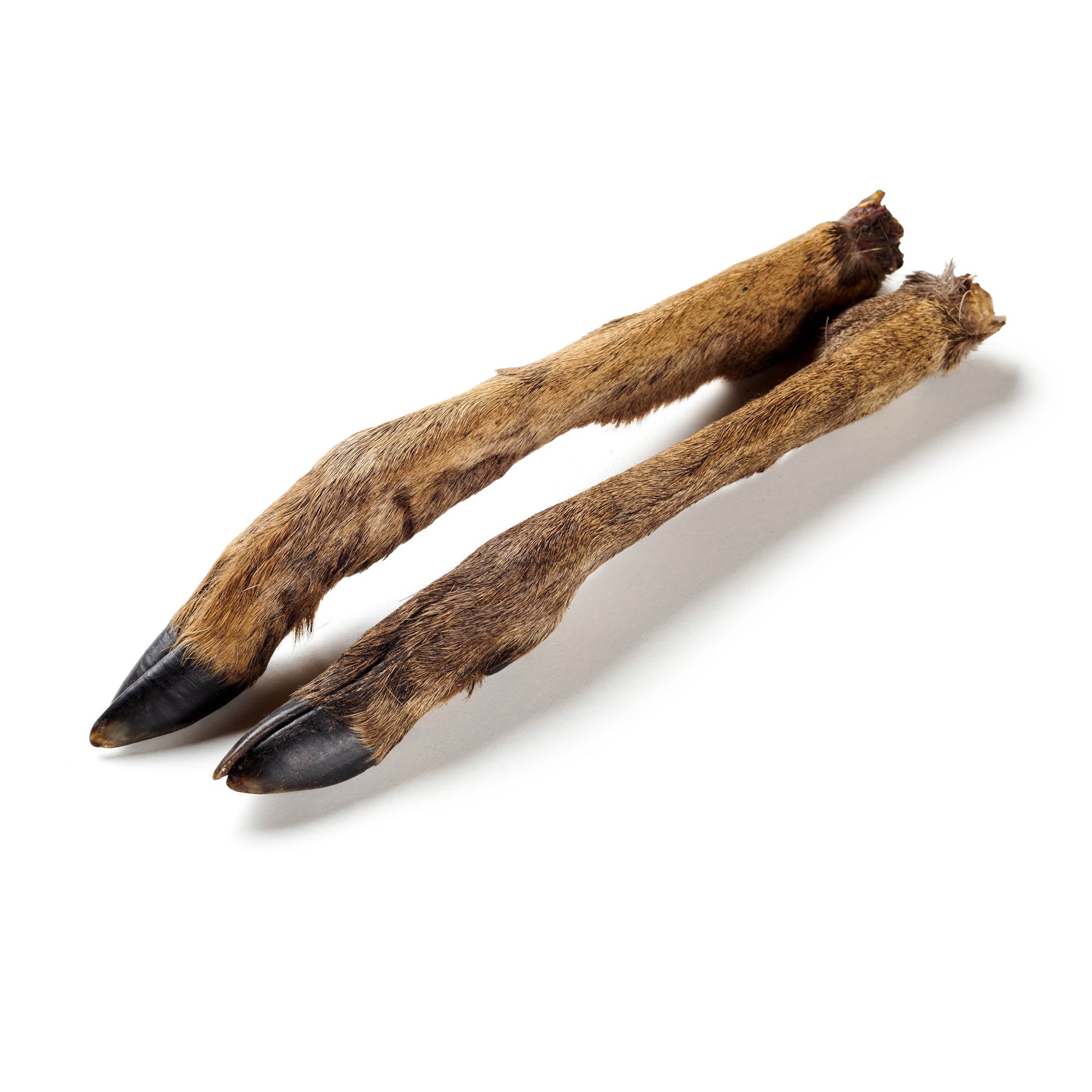
Vacationing with your dog - that's how it works
Share
Finally, vacation! But of course not without a dog - after all, he is part of the family. Most dogs are actually very attached to their "human pack" and suffer when separated.
Your animal companion is usually very flexible when it comes to the type of trip, as long as he or she comes along.
Here you can find out everything about holidays with dogs .
However, if you have very old, sick or anxious dogs, you should think carefully about taking them on holiday, as a trip can be too stressful for these animals.
If you have decided to take your dog with you on your trip, there are a few basic things to consider to ensure that the vacation is a truly relaxing, restful experience for both dog and owner.
All family members, including your furry friend, should feel comfortable when traveling. So there are a few things to consider:
- The question of where the journey should go
- Choosing dog-friendly accommodation
- The question of animal transport
- The currently valid travel regulations of the respective holiday country
Delicious dog snacks for pure enjoyment are available from us!
Where to go on holiday with your dog?
Where should we go? To the mountains, to the countryside or perhaps to the sea?
A tip: If you are still unsure, use the many offers on the Internet that deal specifically with the topic of holidays with dogs - there are countless of them!
In addition to your own preferences, you should also consider the needs of your four-legged friend. If you don't yet know whether your dog is really suitable for traveling, it's best to test it out in advance on shorter weekend trips, etc.
Otherwise it could be stressful for everyone involved, even on the journey. Some dogs like to travel in the car, for example, while others get “travel sick”.
It is also very important that your dog can tolerate the climate at your chosen destination. Extreme heat, for example, is a real ordeal for most dogs, especially those with long, dark fur. They don't sweat through their skin like you do; they regulate their body temperature by panting.
Choosing the right accommodation
Once you have decided on a travel destination, the question arises as to what accommodation is suitable for you and your four-legged friend.
Take your time and enjoy the anticipation of finding the perfect place to stay for your vacation in your favorite place. Find out whether the vacation destination has vacation accommodations for a vacation with a dog .
High-quality dog chews for your faithful companion can be found here!
Possible restrictions
Not all landlords of holiday homes, apartments and hotels are happy to have animal guests. Even if you are allowed to bring your dog to your holiday home, there are still a few things to consider.
Some hotels only have a certain number of “dog rooms”; you must definitely check before you travel whether these are already fully booked and whether your dog is allowed to accompany you.
Observe house rules
Find out about the house rules. Is the dog allowed in the dining room? Can it be left alone in the room? You should only take your dog to the hotel if it is well-behaved. After all, everyone should feel comfortable on vacation and the other guests don't want to be disturbed either.
An alternative is certainly a pet-friendly holiday home or apartment, some even have a fenced garden . Here you have more space and your dog can always be with you.
Travelling with your dog – Getting there
Before you set off on your journey with your animal friend, you should think about how you will get to your holiday destination. Depending on our personal preferences, time and money, we humans have many options for getting to our holiday destination comfortably. To ensure that your dog travels in a species-appropriate and stress-free manner, other criteria must be taken into account.
The most stress-free and flexible option is probably to travel by your own car if your dog is going on holiday with you.
When taking it in the car, please note the following
At least in Germany, a dog must be secured like a load according to local road traffic regulations, i.e. it must be strapped in with a special belt when transported in the back seat.
If the trunk is only separated from the driver's compartment by the back seat, the dog transported in the trunk must either sit in a suitably large crate or a net must be stretched between the trunk and the driver's compartment.
In the event of an accident or emergency braking, everyone in the car is better protected from injury.
To help you find the right transport box, take a look at our transport box comparison: The best dog transport boxes
air conditioner
It's a good idea if your car has air conditioning so that your four-legged friend doesn't get too warm. However, it's better to leave the windows closed so that your dog doesn't get a draft and doesn't get conjunctivitis.
Feed before the trip
Only feed him a little before and during the journey, as some dogs get sick when driving on a full stomach. But remember to offer your dog plenty of water regularly!
Don't forget accessories
We recommend practical travel accessories such as a travel bowl or a drinking bottle. Depending on the length of the journey, you should definitely plan a stop every two hours at the latest - after all, your four-legged friend needs to be taken for a walk sometimes.
Also make sure you have special sun protection on the window so that your dog is not exposed to too much sun in the car.
Be careful in hot temperatures
Very important: In summer you should never leave your dog alone in the car, as the temperature inside the car can rise to 70 degrees in a very short time!
Alternative means of transport
If you don't want to use your car to travel, you may also be able to travel by train, boat or ferry with your dog.
Here too, it is strongly recommended to find out about the specific regulations of the individual companies before you start your journey; some prohibit dogs altogether.
Warning: Flying with a dog
When flying with a dog, you have to make a lot of additional preparations and consider things. You need to find out in advance which airlines take dogs, as this is not the case with all of them.
Some airlines allow small and light dogs weighing up to around eight kilograms to fly with you in the cabin in an air-permeable bag or box provided for the flight. But be sure to get detailed information from the airline in question! Many only allow dogs to fly in the cargo hold and for this you need a suitable transport box with the appropriate IATA certificate!
Be careful with larger dogs
Larger dogs have to spend the flight alone in a transport box in the cargo hold. You should think carefully about whether you really want to subject your four-legged friend to this, because for most animals it is pure stress and creates fear!
It is best to get your dog used to the transport box a few weeks before the trip and put a worn item of clothing of yours and his favorite toy in the box.
Pay attention to entry requirements, vaccinations, etc.!
You should definitely pay attention to the entry requirements and the mandatory vaccinations for your dog that apply in your holiday country. It is best to find out about these important things several months before your trip.
Especially if you have a “fighting dog”, special regulations often apply.
In France, for example, breeds such as Pit Bull Terrier, Staffordshire Terrier, American Staffordshire Terrier , Mastiff and Tosa Inu are not allowed to enter the country at all.
Pet passport
Otherwise, you can travel within the EU without any problems with a valid pet passport for your dog. You can get this passport from the vet; it contains detailed information about the animal, its owner and proof of a valid rabies vaccination.
You can also have your four-legged friend undergo a health check to make sure he is fit enough for the trip.
Your dog must have a microchip; tattoos alone are no longer sufficient for identification.
Vaccinations against common diseases such as parvovirus, distemper, leptospirosis and kennel cough are also recommended. Especially abroad, many local dogs are not vaccinated and are sick and can therefore transmit these diseases to your dog if they come into contact with them.
When traveling to the Mediterranean region, vaccination against leishmaniasis, heartworms, ehrlichiosis and babesiosis is recommended.
If you want to spend a holiday with your dog in Great Britain, Ireland, Malta or Finland, you must observe the stricter requirements regarding antiparasitic treatments, especially echinococcus treatment (tapeworms).
Non-EU countries
The regulations in non-EU countries can vary greatly. To be up to date, contact the embassy of the respective country in Berlin or the local tourist offices before booking your holiday.
Please note: Dog liability insurance, which also covers damage to rented properties, is also essential for holidays with dogs . As a dog owner, you should also not forget to find out about the conditions for re-entering the EU and Germany.
Enjoy moments together with our delicious dog chews!
What do I need to take for my dog?
Be sure to bring your companion's dog bed and blanket, his favorite toy, and his usual food and water bowls. Pack everything you need for grooming, especially his dog brush.
Take enough dog food with you, especially if your dog can only tolerate a certain type of food or likes a certain one in particular. Check whether his food is available to buy at your holiday destination. Don't forget treats for your dog! A sufficient number of poop bags to clean up your dog's business should also be included in your travel bag.
First aid kit for your dog
Very important: If your four-legged friend needs medication, you must not forget it! Pack a sufficient amount of all the medications he needs every day.
Also put together a small first aid kit for your dog.
This should include:
- Wound spray or ointment
- Parasite prophylaxis (e.g. spot-on preparations)
- Sunscreen for short-haired dogs
- Disinfectants
- Charcoal tablets or other anti-diarrheal medications
- Ear cleaner
- sterile saline solution
- Electrolyte powder
- Tick pliers and tweezers
- Cooling compresses, bandages and scissors
- Remedy for motion sickness
Further points
Make a note of the emergency numbers for local vets. A leash, collar and muzzle are also items that you must remember. In some inner cities, for example, muzzles are compulsory.
In some inner cities, for example, dogs must be muzzled.
Conclusion - Holiday with dog
This way you can be well prepared for a wonderful holiday with your dog .
If you have a loyal furry friend by your side, you don't want to miss out on their company on vacation. Dogs make great travel companions because, among other things, they encourage you to be active.
With them, a trip is never boring and on long walks you often discover interesting things that you would never have seen without the dog.
Even if you have to consider and organize a few things in advance for your vacation with your dog , don't let that stop you!
The time spent together and the new experiences with your four-legged friend are definitely worth it! If your trip is well prepared and planned, you are guaranteed to have a great vacation with your dog .
Pamper your dog with our delicious chews!


















